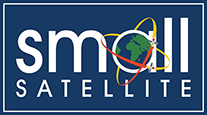Session
Session II: Next on the Pad-Enterprise
Location
Salt Palace Convention Center, Salt Lake City, UT
Abstract
Space objects in the size range of 0.1 mm to 3 cm are not currently trackable but have enough kinetic energy for lethal consequences to spacecraft. Small orbital debris poses a risk to most space missions; the detection of this debris requires a combination of a large sensor area and large time coverage. For example, a sensor with a time area product of 3 m2years can make a significant contribution to our understanding of the near-Earth small debris population. Deploying large sensors like physical witness plates is resource intensive, due to their size and weight. The light sheet sensor concept allows the creation of a “virtual witness plate”, which needs no supporting physical structure and therefore presents a novel method for the detection of small debris anywhere from low Earth orbit to interplanetary space. Recent technology maturation efforts in the laboratory successfully demonstrated detection of small debris (1.6 mm diameter) moving at 6.38 km/s in support of the NRL-built, NASA-funded LARADO instrument, which itself is a technology maturation effort for a flight demonstration of the sensor on STPSat-7. In this paper, we will describe the instrument, present the laboratory data and analysis, and describe the autodetection algorithms for the DoD Space Test Program STPSat-7 launch in February of 2026.
Document Type
Event
Lightsheet Anomaly Resolution and Debris Observation (LARADO)
Salt Palace Convention Center, Salt Lake City, UT
Space objects in the size range of 0.1 mm to 3 cm are not currently trackable but have enough kinetic energy for lethal consequences to spacecraft. Small orbital debris poses a risk to most space missions; the detection of this debris requires a combination of a large sensor area and large time coverage. For example, a sensor with a time area product of 3 m2years can make a significant contribution to our understanding of the near-Earth small debris population. Deploying large sensors like physical witness plates is resource intensive, due to their size and weight. The light sheet sensor concept allows the creation of a “virtual witness plate”, which needs no supporting physical structure and therefore presents a novel method for the detection of small debris anywhere from low Earth orbit to interplanetary space. Recent technology maturation efforts in the laboratory successfully demonstrated detection of small debris (1.6 mm diameter) moving at 6.38 km/s in support of the NRL-built, NASA-funded LARADO instrument, which itself is a technology maturation effort for a flight demonstration of the sensor on STPSat-7. In this paper, we will describe the instrument, present the laboratory data and analysis, and describe the autodetection algorithms for the DoD Space Test Program STPSat-7 launch in February of 2026.


